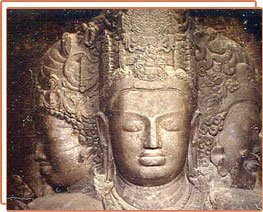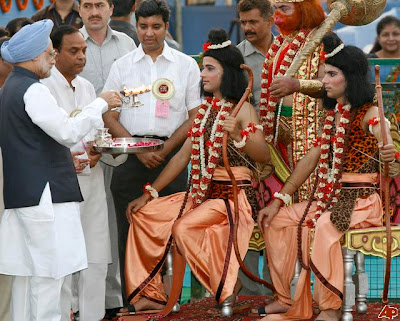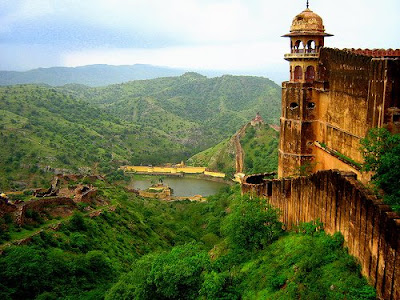


A very fine example of early rock cut architecture, Elephanta Caves are designated as World Heritage Site by UNESCO. Located 10 km from the Gateway Of India at Mumbai, the cave temple of Elephanta is one of the most popular destination for tourists on visit to Mumbai. Though Elephanta Caves are not as popular as Ajanta and Ellora, yet the caves are quite appealing in their architectural beauty.
One-and-half hour boat ride (almost 10 km) from the Gateway Of India, Mumbai, takes you to a world of rocks carved out beautifully thousands years before, and today known for its architectural excellence. Excavated by Rashtrakuta kings during 8th century (AD 757-973), the cave temple of Elephanta is dedicated to lord Shiva, and somewhat can be assumed today as perfect spiritual retreat for travellers. The whole temple complex including chambers, courtyard and shrines covers total area of 60,000 sq feet, and boasts of its magnificence.
The main attraction to liven your cheer are definitely sculptures of lord Shiva in different forms. Trimurti, the popular sculpture of the cave temple shows three faces of lord Shiva similar to trinity of Brahma, Vishnu and Mahesha. Several other famous sculptures are Shiva as Natraja, Andhakasuravadhamurti Shiva, Shiva Linga, Maheshwara, Parvati in attitude of Mana and Shiva as Lakulisa. Watching these sculpture in their wonderful natural setting are tourist's great delight as well as fine spiritual retreat.










![Reblog this post [with Zemanta]](http://img.zemanta.com/reblog_e.png?x-id=cfc2510a-069a-405b-9e5f-3cddd69d5ff5)

![Reblog this post [with Zemanta]](http://img.zemanta.com/reblog_e.png?x-id=dbda6fdd-0f61-44e0-8eb0-54e804899ad6)

![Reblog this post [with Zemanta]](http://img.zemanta.com/reblog_e.png?x-id=fbad3897-4955-48ce-88b8-af8f3bfe51d0)